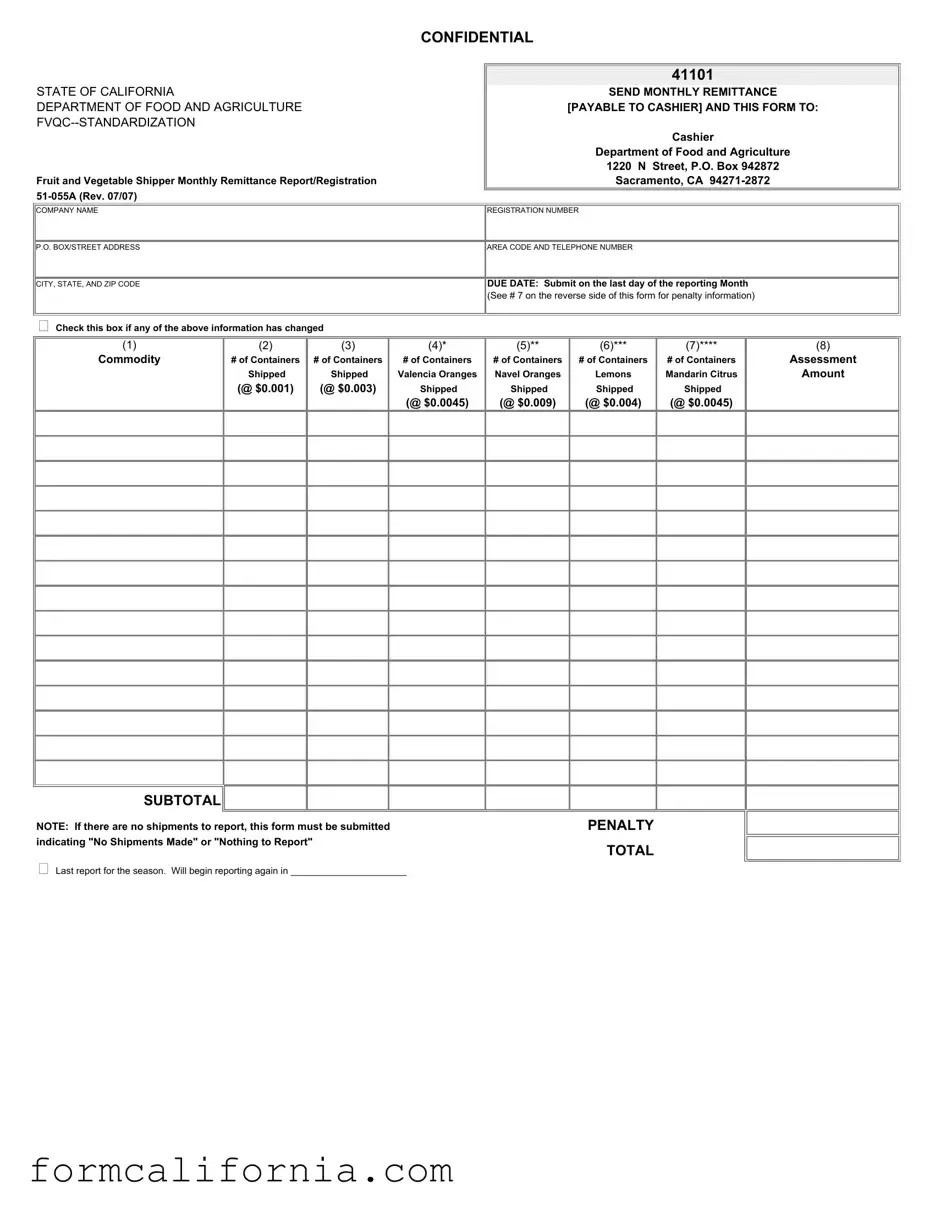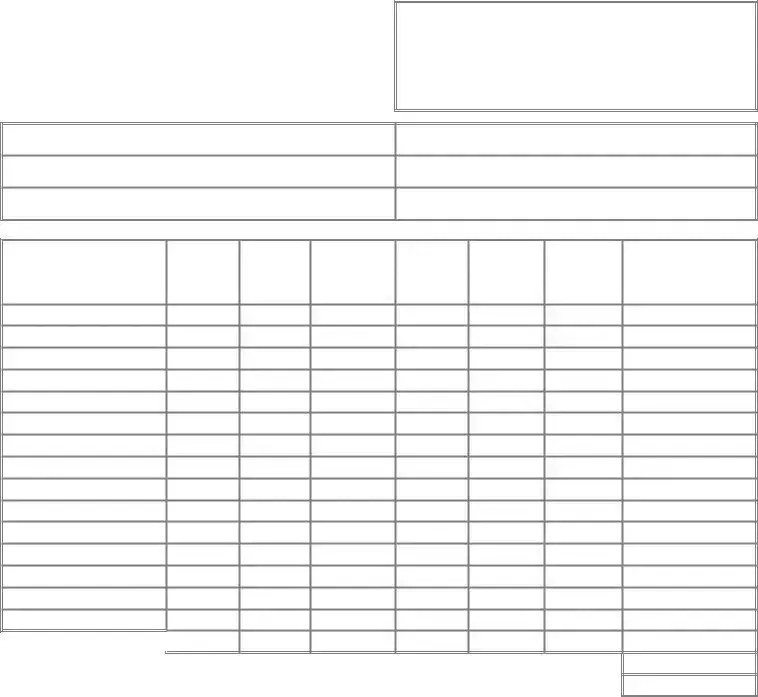The California 51 055A form, also known as the Fruit and Vegetable Shipper Monthly Remittance Report/Registration, is a document issued by the California Department of Food and Agriculture. It's designed for fruit and vegetable shippers to report and remit monthly assessments based on their shipments. This document helps in the standardization and tracking of agricultural produce within the state.
Any entity involved in the shipping of certain fruits and vegetables within California must complete this form. This includes farmers, distributors, and businesses that deal with the shipping of commodities such as oranges, lemons, and mandarins, among others.
How is the assessment amount calculated?
The assessment amount is calculated based on the number of containers shipped and the corresponding rate per container for each commodity type. The form lists different commodities along with a per container rate for them. To calculate the total, multiply the number of containers shipped by the rate per container for each listed item, then sum up these amounts to get the subtotal. Any penalties or adjustments can be added to this subtotal to reach the total amount due.
This form should be mailed to the Cashier at the Department of Food and Agriculture, at the address provided on the form. It's due on the last day of the reporting month. For instance, if reporting for July, the form and any payment due must be submitted by July 31st.
If any of the pre-filled information, such as your company name or address, has changed, it's important to check the designated box on the form indicating these changes. This ensures that your records are updated accordingly with the Department of Food and Agriculture.
What if there are no shipments to report for a month?
Even if there are no shipments to report for a particular month, you are still required to submit the form. In such cases, you should indicate "No Shipments Made" or "Nothing to Report" on the form to fulfill your reporting obligations without making a payment.
Penalties may apply for late submissions or incorrect payments. Specific details about penalties are provided on the reverse side of the form, under Section 7. It's critical to review these details to understand the potential consequences of not complying with the submission guidelines or deadlines.
Can I begin reporting again after a break?
Yes, if you stop shipments and therefore stop reporting for a season, you can indicate the month you plan to begin reporting again at the bottom of the form. This lets the Department of Food and Agriculture know when to expect your future reports.
While this document primarily exists in a paper format for mailing, it's advisable to contact the Department of Food and Agriculture directly to inquire about any available digital submission options. As technology and processes evolve, digital reporting may become an alternative to or replace traditional mail-in methods for convenience and efficiency.



